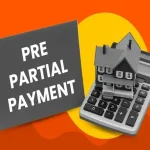Understanding loan amortization is key to managing debt. This guide clarifies how loan payments are structured over time, detailing its function, mechanics, and importance for financial well-being, so you can interpret an amortization schedule and understand payment allocation.
What is Loan Amortization?
Loan amortization is the process of spreading out a loan into a series of fixed payments over a set period. Each payment you make is split into two parts: one part goes toward paying off the interest, and the other goes toward reducing the principal, which is the original amount you borrowed.
At the beginning of your loan term, a larger portion of your payment is applied to interest. As you continue to make payments, this slowly shifts. More of your money starts going toward the principal, which helps you pay down your debt faster. This process continues until the loan is fully paid off at the end of its term. Amortization is common for various types of loans, including mortgages, auto loans, and some personal loans.
The Parts of a Loan Payment: Principal vs. Interest
To fully grasp amortization, you need to understand the two main components of every loan payment: principal and interest.
Principal
The principal is the initial amount of money you borrow from a lender. If you take out a $20,000 car loan, the principal is $20,000. Each time you make a payment, a portion of it reduces this principal balance. The primary goal of any loan repayment is to bring this balance down to zero.
Interest
Interest is the cost of borrowing money. It’s what the lender charges you for the convenience of using their funds. Interest is usually expressed as an annual percentage rate (APR). When you make a loan payment, a part of it covers the interest that has accrued on your outstanding balance since your last payment.
How They Work Together
Here’s how principal and interest payments change over the life of a loan:
- Early Payments: In the initial phase of your loan, most of your payment goes toward interest. This is because the principal balance is at its highest, so more interest accrues. A smaller amount of your payment goes to reducing the principal.
- Later Payments: As you pay down the principal, the amount of interest you owe each month decreases. Consequently, a larger portion of your payment starts going toward the principal. This change accelerates your debt reduction in the later stages of the loan term.
An amortization schedule provides a clear, payment-by-payment breakdown of this entire process, showing you exactly how much of each payment is allocated to principal and how much to interest.
How to Create an Amortization Schedule
An amortization schedule is a table that details each payment for an amortizing loan. It shows the allocation of principal and interest for every payment throughout the loan’s term. While your lender will provide you with a schedule, you can also create one yourself using a spreadsheet.
Here’s a step-by-step guide to creating a basic amortization schedule in a spreadsheet program like Microsoft Excel or Google Sheets.
Step 1: Gather Your Loan Information
You’ll need the following details:
- Loan Principal (P): The total amount you borrowed.
- Annual Interest Rate (r): The yearly interest rate.
- Loan Term (n): The number of years to repay the loan.
- Payments per Year (k): Typically 12 for monthly payments.
Step 2: Calculate Your Monthly Payment
You can use the PMT formula in your spreadsheet to calculate your fixed monthly payment. The formula is: =PMT(rate, nper, pv)
- rate: The interest rate per period (Annual Rate / 12).
- nper: The total number of payments (Loan Term in years * 12).
- pv: The present value, or the loan principal.
For example, for a $200,000 loan over 30 years at a 5% annual interest rate, the formula would look like this: =PMT(0.05/12, 30*12, 200000). The result will be your monthly payment amount.
Step 3: Set Up Your Spreadsheet
Create columns for the following:
- Payment Number: 1, 2, 3… up to the total number of payments.
- Beginning Balance: The loan balance at the start of the period. For the first payment, this is your initial loan principal.
- Payment Amount: Your fixed monthly payment calculated in Step 2.
- Interest Paid: The portion of the payment that goes to interest. Calculate this by multiplying the Beginning Balance by the monthly interest rate.
- Principal Paid: The portion that goes to the principal. Calculate this by subtracting the Interest Paid from the Payment Amount.
- Ending Balance: The remaining loan balance. Calculate this by subtracting the Principal Paid from the Beginning Balance.
Step 4: Fill Out the Schedule
- Row 1 (Payment 1): Enter your initial loan principal as the Beginning Balance. Fill in the payment, interest, and principal amounts using the formulas from Step 3. The Ending Balance of this row becomes the Beginning Balance for the next row.
- Subsequent Rows: Drag the formulas down for the entire loan term. If set up correctly, the Ending Balance in the final row should be zero (or very close to it), indicating the loan is fully paid off.
This schedule gives you a powerful visual representation of your loan’s journey from start to finish.
Why Understanding Amortization Matters
Understanding how loan amortization works is more than just a financial lesson; it’s a practical tool for managing your money. Knowing the details of your payment schedule can empower you to make smarter financial decisions. This is true for many types of credit, including personal loans like those in Utah and mortgages across the country.
Here are a few key benefits:
- Financial Clarity: An amortization schedule shows you exactly where your money is going. You can see how much you’re paying in interest over the life of the loan, which can be a real eye-opener.
- Better Budgeting: Knowing your fixed monthly payment and how it’s broken down helps you budget more effectively. You have a clear picture of one of your major monthly expenses.
- Informed Decision-Making: If you’re considering making extra payments, an amortization schedule shows you the impact. By paying more than the required amount, you can reduce your principal balance faster, pay less interest over time, and pay off your loan sooner.
- Motivation to Save: Seeing the total interest you’ll pay can be a powerful motivator to pay off debt faster. It highlights the real cost of borrowing and can encourage you to look for ways to accelerate your repayment.
Conclusion
Loan amortization helps you see how payments are divided between principal and interest, showing the true cost of a loan. An amortization schedule offers clarity for managing finances, planning ahead, and saving on interest. For tailored advice, consult your lender or financial advisor.






